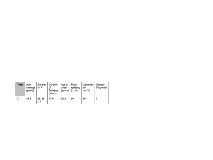Brivaracetam: Real-Life Experience in Wales
Abstract number :
3.214
Submission category :
4. Clinical Epilepsy / 4C. Clinical Treatments
Year :
2018
Submission ID :
506897
Source :
www.aesnet.org
Presentation date :
12/3/2018 1:55:12 PM
Published date :
Nov 5, 2018, 18:00 PM
Authors :
Charlotte Lawthom, Aneurin Bevan University Health Board; Joseph Anderson, Aneurin Bevan University Hospital Board; Keri John, Aneurin Bevan University Health Board; Jenny Edwards, Aneurin Bevan University Hospital Board; Rebecca Morcom, Abertawe Bro Morg
Rationale: Brivaracetam is a newly available antiepileptic drug (AED). This drug is available across Wales within the U.K. Real world data provides longer-term, authentic data in complex epilepsy settings. We have evaluated the utility of this drug in two centres across Wales. Methods: We identified all adult patients prescribed Brivaracetam in Aneurin Bevan University Health board and Abertawe Bro Morgannwg. Demographic data, epilepsy diagnosis and seizure data are presented here alongside adverse effect reporting. We continue to collate data. Results: Demographic data captured a typical average age with an even gender distribution. The population was highly refractory, with long duration and high seizure frequency.(see table 1). Seizure frequency mean was high in the dataset (62 seizures/month, range of 0 - 633) and 63 (90%) patients were receiving a minimum of 2 AED drugs at baseline.Of the focal epilepsies where the foci was identified, temporal foci was most prevalent (n = 16), with frontal foci in six individuals and occipital in two, consistent with epilepsy population data.individuals with learning disability were categorised as mild (n=4, 6%) and moderate or severe (n=13, 18%). Dosing in this population was slower at 25mg start and 25 mg weekly increments. Pre-existing physical and mental health data recorded diagnoses of depression and suicidality in 9(13%) and 4(6%) individuals respectively. Only one patient had a pre-existing diagnosis of intermittent psychosis. The majority of the patients had received Levetiracetam previously (n= 47 67%) and of these 24 (34%) had discontinued it. Switching was successfully achieved overnight in 23 people (33%) in a ratio of Levetiracetam: Brivaracetam of 10:1. The commonest reason for switching was irritability, (n=18) with one further individual each reporting tiredness and depression. All of these individuals remain on Brivaracetam. The mean dose in this subset is 210mg/day Brivaracetam.The levetiracetam naive group received a slow titration of 25mg per week with an initial mean target dose of 67 mg/day Brivaracetam. Seizure data is presented only for those who have remained on brivaracetam longer than 120 days (see table 2) updated data will be available for the complete data set in November.Only 7 (10%) of the total data set have withdrawn the drug to date. Adverse effects (AE)have been reported in 16 individuals only. No serious adverse events have occurred. Commonly reported symptoms are drowsiness (n=2), fatigue (n=7), headache (n=2), impaired coordination (n=2), visual disturbance (n=1) and low mood (n=4). Neuropsychiatric adverse events of aggression were reported in 3 of the 70 prescribed Brivaracetam. Two of these withdrew from the drug, one had previous challenging behaviour and a label of ASD, the other had pre-existing aggressive traits and a personality disorder label. The third patient remains on Brivaracetam. No other neuropsychiatric effects have been reported but we have not received depression scores to date. Spontaneous comments about mood improvement and alertness have been recorded in 6 patients. Conclusions: Brivaracetam is well-tolerated and effective. Rates of all adverse events are low in our cohort, with 90% of patients remaining on Brivaracetam at 30 days. Funding: None

.tmb-.jpg?Culture=en&sfvrsn=3596f6cf_0)